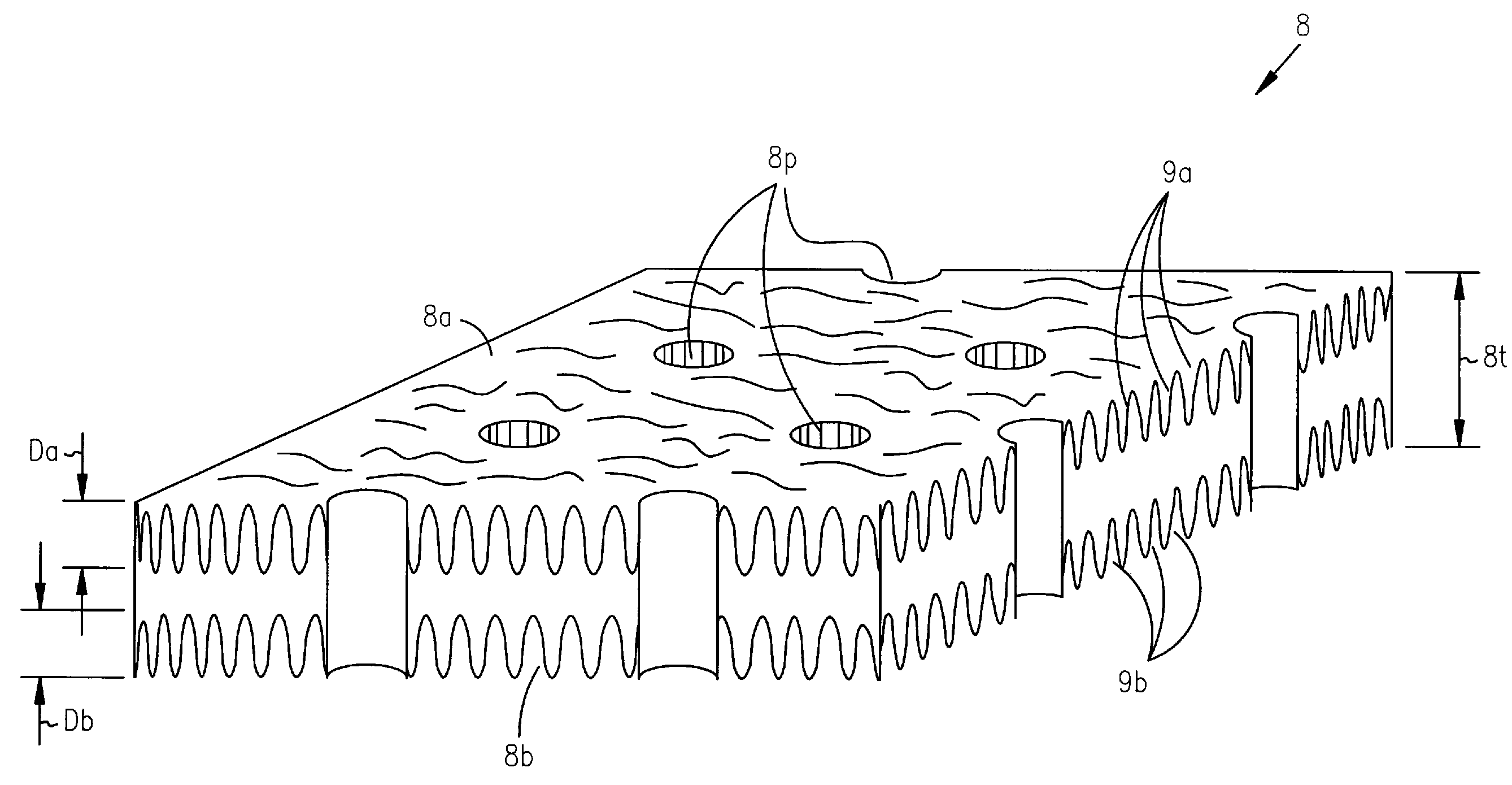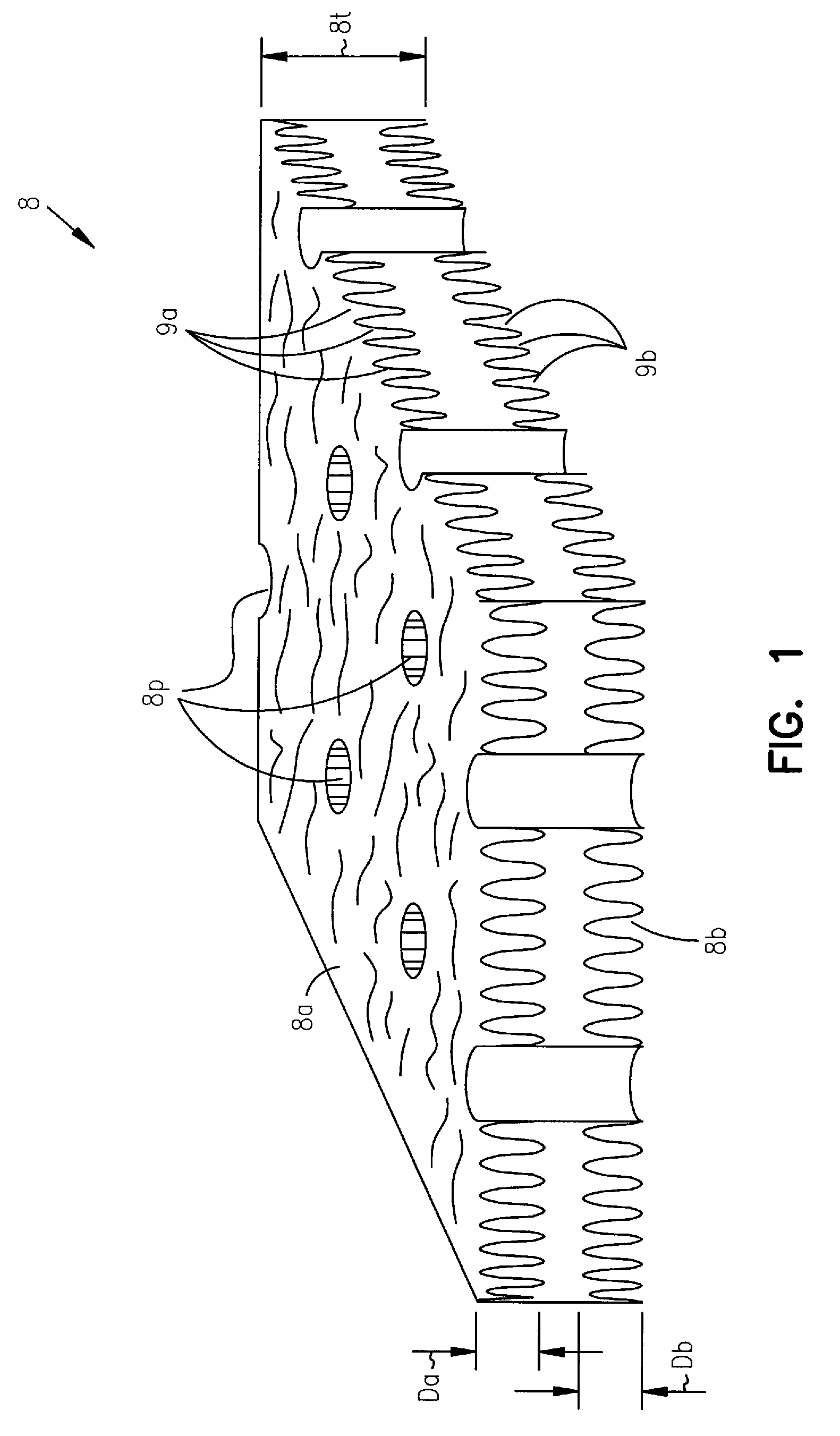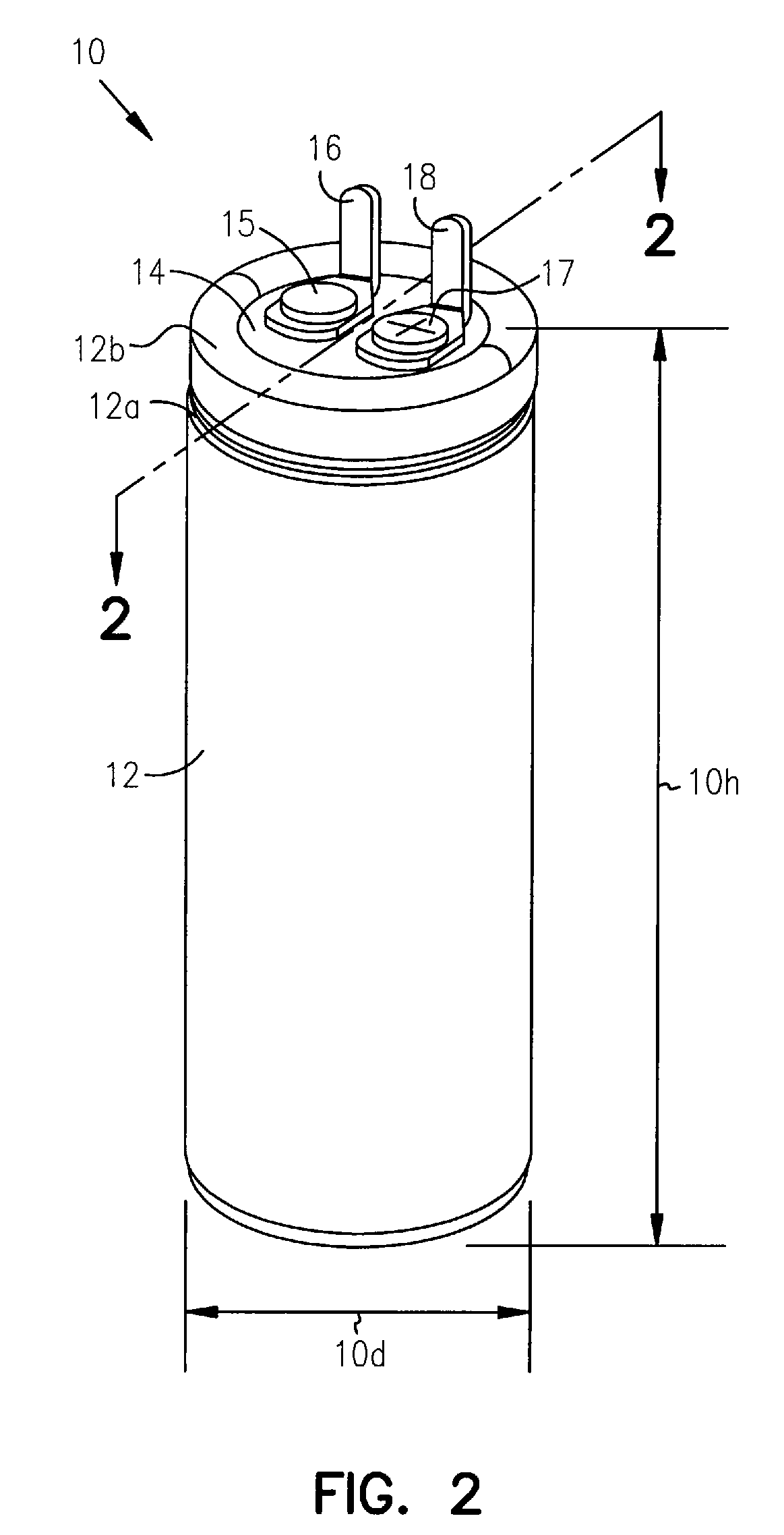High-energy capacitors for implantable defibrillators
a high-energy, defibrillator technology, applied in the field of electrolytic capacitors, can solve the problems of failure to rhythmically expand and contract, complete loss of cardiac function and death within minutes, and capacitors that don't work as well as expected
- Summary
- Abstract
- Description
- Claims
- Application Information
AI Technical Summary
Benefits of technology
Problems solved by technology
Method used
Image
Examples
Embodiment Construction
[0021]The following detailed description, which references and incorporates FIGS. 1-7, describes and illustrates one or more exemplary embodiments of the invention, specifically a new foil structure and method of manufacture, several new foil assemblies, new capacitors incorporating the foil structure and foil assemblies, and an implantable defibrillator incorporating one or more of the new capacitors. These embodiments, offered not to limit but only to exemplify and teach, are shown and described in sufficient detail to enable those skilled in the art to implement or practice the invention. Thus, where appropriate to avoid obscuring the invention, the description may omit certain information known to those of skill in the art.
Exemplary Foil Structure and Methods of Manufacture
[0022]FIG. 1 shows an enlarged perspective view of a foil structure 8 which the inventors call a “perforated-core-etched” foil. Foil structure 8 can be made of aluminum, tantalum, hafnium, niobium, titanium, z...
PUM
 Login to View More
Login to View More Abstract
Description
Claims
Application Information
 Login to View More
Login to View More - R&D
- Intellectual Property
- Life Sciences
- Materials
- Tech Scout
- Unparalleled Data Quality
- Higher Quality Content
- 60% Fewer Hallucinations
Browse by: Latest US Patents, China's latest patents, Technical Efficacy Thesaurus, Application Domain, Technology Topic, Popular Technical Reports.
© 2025 PatSnap. All rights reserved.Legal|Privacy policy|Modern Slavery Act Transparency Statement|Sitemap|About US| Contact US: help@patsnap.com



